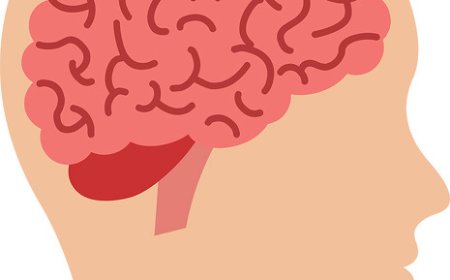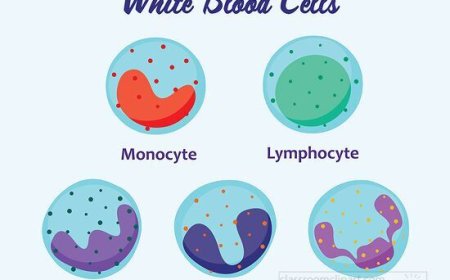What Is the Immune System? Understanding Your Body’s Defense Team
Learn what the immune system is and how it protects your body from germs like viruses and bacteria. Explore how this body system works like a superhero squad.
🦠 What Is the Immune System?
🔍 Introduction: Your Invisible Superpower
Every day, your body is under attack by tiny invaders—germs like bacteria, viruses, and even fungi. These invaders can make you sick. But don’t worry—your body has an incredible built-in defense system: the immune system. It works around the clock to protect, defend, and heal you.
The immune system isn’t just one part of your body. It’s a team of cells, tissues, and organs that work together like a superhero squad to keep you healthy.
In this article, we’ll explore:
What the immune system does
How it spots and fights germs
What happens when it wins (or loses) a battle
The amazing teamwork behind immunity
Let’s find out how your body becomes a disease-fighting machine!
🧱 What Does the Immune System Do?
The immune system has three main jobs:
Recognize harmful invaders like bacteria and viruses
Destroy or remove those invaders
Remember the invader to fight it better next time
This powerful system uses a variety of white blood cells, proteins, and organs to do its job. Think of it like a castle with guards, scouts, and a memory bank of every past battle.
🧫 What Are Germs, Anyway?
Before we dive into how the immune system fights, let’s understand what it's fighting.
Types of Germs:
Bacteria – Tiny one-celled organisms. Some are helpful (like in your gut), but others can cause infections.
Viruses – Even smaller than bacteria. They need to get inside your body’s cells to grow and cause illnesses like the flu or COVID-19.
Fungi – Can cause infections like athlete’s foot or ringworm.
Parasites – Tiny creatures like worms that live off your body’s nutrients.
When these germs try to invade, your immune system jumps into action to stop them.
🧙♂️ First Line of Defense: Barriers
The immune system starts protecting you before germs even enter your body.
Physical Barriers:
Skin: Acts like a shield
Mucus in your nose and lungs: Traps germs
Tears and saliva: Wash away bacteria
Stomach acid: Destroys swallowed germs
These barriers are like walls, gates, and guards that stop intruders at the door. But sometimes, germs sneak past. That’s when the internal defenders kick in.
🦸♀️ Second Line of Defense: The Innate Immune System
The innate immune system is your body's fast and general response to invaders. It doesn’t care what kind of germ it’s fighting—it just attacks.
Key Players:
White blood cells (like macrophages and neutrophils): Eat and destroy germs
Inflammation: Swelling, redness, and heat that bring more defenders to the fight
Fever: Heats up the body to slow down germs and speed up healing
This part of the immune system acts within minutes to hours and is always ready to act.
🧠 Third Line of Defense: The Adaptive Immune System
This part of the immune system is slower but more powerful and smart. It learns from past infections and creates specialized cells to remember them.
Key Features:
Targets specific germs
Remembers germs so it can react faster next time
Creates long-term immunity
When you get a vaccine, it trains your adaptive immune system to recognize and defeat a specific germ before it makes you sick.
🧬 Antibodies: Your Body’s Custom Germ-Fighters
When a new invader is detected, the immune system makes special proteins called antibodies. These proteins “tag” the germ so other cells can find and destroy it.
Antibodies are made by B cells, and they can stay in your body for years, even after the infection is gone. That’s why people don’t usually get chickenpox or measles more than once.
🧠 Vocabulary List
Immune system – The body system that protects against disease
Germs – Tiny organisms that can cause sickness
Bacteria – One-celled germs, sometimes harmful
Viruses – Germs that invade your cells to reproduce
White blood cells – Cells that fight infection
Antibodies – Proteins that help find and stop germs
Innate immune system – The quick, general response to invaders
Adaptive immune system – The smart, memory-based system
Inflammation – The body's way of signaling that it’s fighting an infection
Fever – A raised body temperature that helps fight germs
❓ Interactive Quiz: Test Your Immune System Smarts!
1. What is the main job of the immune system?
A. Pump blood
B. Help you breathe
C. Fight off germs
D. Make you grow
2. Which type of white blood cell makes antibodies?
A. T cells
B. Red blood cells
C. B cells
D. Platelets
3. What is a physical barrier in the immune system?
A. Fever
B. Skin
C. Antibodies
D. White blood cells
4. What does a fever do to help your immune system?
A. Makes you sleepy
B. Slows down germs
C. Lowers blood pressure
D. Increases oxygen
5. What part of the immune system remembers past infections?
A. Innate immune system
B. Digestive system
C. Circulatory system
D. Adaptive immune system
🟢 Answers: 1-C, 2-C, 3-B, 4-B, 5-D
⭐ Kid-Friendly Summary
Your immune system is your body’s personal army that protects you from getting sick. It fights off germs like bacteria and viruses, using special cells like white blood cells and antibodies. Some defenses work fast, and others remember the germs so they can protect you in the future. Even your skin and tears help defend your body. Pretty cool, right? Your immune system is always working—even when you're asleep!
🤯 Fun and Interesting Facts
You have about 1 trillion white blood cells in your body!
Your immune system can learn and remember—like a real brain!
Fevers are a natural way your body fights infections.
Some vaccines last your whole life—others need boosters.
The immune system was once called “the healing force of nature.”




















































